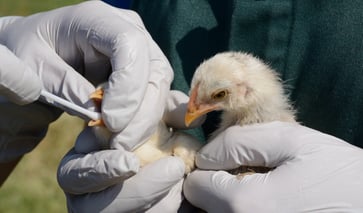Performing the Heimlich maneuver in a choking emergency: Tips and precautions
The first-aid method differs for adults, infants, and yourself, according to Mass General Brigham.

A choking emergency can turn really scary, really quickly.
The ability to remove a blockage while remaining calm can be the deciding factor between life and death, whether it is done by oneself or another person.
An obstruction in a person's windpipe can be dislodged using abdominal thrusts, which is a first-aid method recommended by most health organizations.
The Heimlich maneuver guidance, provided by emergency medicine doctor Wendy Macias-Konstantopoulos, MD, is available on the Mass General Brigham website.

1. Call 911
In any choking emergency, it is recommended to call 911 to report the need for medical assistance.
If there is another person present, one person should call 911 while the other begins performing the Heimlich maneuver.
2. Assess the situation
According to Macias-Konstantopoulos, the Heimlich maneuver should not be performed on someone who can still talk, breathe, or cough.
If someone is exhibiting signs of coughing, encourage them to continue coughing to dislodge the object.
If none of the choking signs are present or if the person is exhibiting the universal choking sign, administer up to five sharp blows to their back with the heel of your hand between their shoulder blades.

3. Initiate the Heimlich
If the person is still choking after a few blows to the back, experts recommend performing the Heimlich maneuver.
The guidance of Macias-Konstantopoulos is to initially stand behind the choking person or kneel if it's a child.
Hold their torso with both arms and make a fist with one hand while grabbing it with the other.
Place your hands between the person's belly button and rib cage.

The doctor advised repeating up to five abdominal thrusts to force air out of the lungs and remove the blockage.
If the choking persists, perform five back blows followed by five abdominal thrusts until the airway is cleared or help arrives.
Instead of the abdomen, the Heimlich maneuver can be administered with five chest thrusts to the breastbone or middle of the chest for people who may be pregnant or obese.
What to do when a baby is choking
The Heimlich maneuver should not be performed on infants under 12 months, according to a warning from Mass General Brigham.
For more Health articles, visit planetchronicle.net/health
If a baby is choking, hold them face down on your arm or thigh, with their head lower than their bottom.
The health care system advised gently tapping the baby on their back, five times, without causing injury.

After removing the blockage, examine the baby's mouth and remove any visible objects with your finger.
If back blows don't work, try chest thrusts by holding the baby face up in the same orientation.
According to Macias-Konstantopoulos, keep the baby's head lower than their body and support it with your hand.
Pressing firmly on the baby's breastbone or chest center, move your fingers up and down one inch five times.

Parents and guardians should be cautious when feeding children popcorn, nuts, grapes, hot dogs, and hard candy, as these foods pose a high risk of choking.
She advised to cut children's food into small pieces prior to consumption.
"Ensure that children do not have access to choking hazards, closely monitor their eating habits, and supervise their playtime."
What to do if you're choking
Performing the Heimlich technique on oneself is possible when choking alone, according to Mass General Brigham.
Pull your fists upwards and inwards towards your diaphragm, placing them above your belly button.
Instead of bending over a hard surface and shoving yourself into your abdomen, you can try doing a plank pose to create a similar force to your lungs.
In many states, texts can be sent to 911 as an alternative to speaking.
""Input '9-1-1' into the 'to' or 'recipient' field and immediately text your location and emergency nature," Macias-Konstantopoulos instructed."
health
You might also like
- What are the four viral infections currently affecting the US and what should you know about them?
- Doctors hail a 'New golden age' with Trump and a healthier America.
- Researchers suggest a more accurate way to measure obesity than BMI.
- Ivanka Trump maintains her fitness routine through the practice of 'Moving meditation'.
- To detect more bird flu cases, the CDC advises quicker 'subtyping'.



















